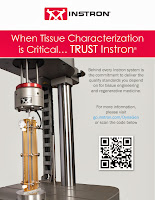Instron understands that the Food and Drug Administration (FDA) requires biomedical testing results generated through software to comply with 21 CFR Part 11. Knowing this, Instron provides ComplianceBuilder as a solution to manage your electric records. Xybion, creator of ComplianceBuilder, discusses its features:
"If you are testing medical devices, pharmaceuticals, or any other product that requires the submission of data to the FDA and you are collecting that data electronically, you are required to adhere to FDA 21 CFR Part 11 Compliance. In short, Part 11 defines how any electronic documentation submitted to the FDA or required to be kept to comply with any FDA regulation shall be regulated and controlled. Failure to adhere to these regulations can result in hefty fines for your organization, and delays in delivering your products and services to the market.
ComplianceBuilder, a stand-alone, add-on package that runs with Instron’s Bluehill® Software, provides a data management solution designed to facilitate full compliance for your Instron systems. When test method or sample files are created, modified, or deleted, ComplianceBuilder stores the files in a secure data repository. The ComplianceBuilder file management system allows users to quickly and easily monitor all of these changes, which can be consolidated into an audit trail for FDA audits in just a few clicks. All file versions can easily be retrieved at any time from the database. Electronic signatures can be implemented to authorized personnel for device and authority checks, per the Part 11 requirements."
If you have questions on this subject, feel free to contact your local Instron representative to discuss further. Read more




